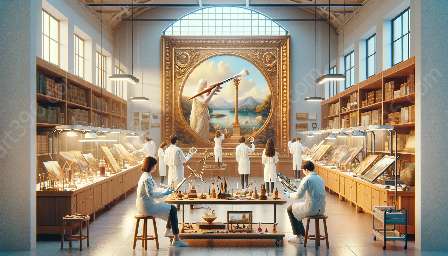Art conservation is an essential field dedicated to preserving humanity's cultural heritage through the care and protection of artworks. The future of art conservation depends on embracing best practices and staying informed of evolving trends. Education plays a vital role in promoting these best practices, ensuring the legacy of art for generations to come.
Understanding Art Conservation
Art conservation involves the examination, treatment, and preservation of cultural artifacts and artistic works. It aims to maintain their aesthetic, historical, and physical integrity, safeguarding them from decay, deterioration, and damage.
Significance of Education in Art Conservation
Education is fundamental in promoting best practices in art conservation. It empowers professionals and enthusiasts to develop the knowledge, skills, and ethical considerations necessary for effective preservation. By offering training in the latest conservation techniques and technologies, educational initiatives drive the progress of the field.
Adapting to Future Trends
As the art world continues to evolve, so do the challenges and opportunities for conservation. By incorporating new materials, methodologies, and interdisciplinary approaches, education enables practitioners to adapt to future trends in art conservation. This adaptability ensures that cultural heritage remains safeguarded in the face of changing environmental and societal factors.
Embracing Technological Advancements
Technology plays a significant role in shaping the future of art conservation. Educational programs that emphasize the integration of innovative tools, such as digital imaging, 3D scanning, and nanomaterials, empower conservation professionals to enhance their work and address the complexities of preserving diverse art forms.
Global Collaboration and Knowledge Sharing
Education fosters international cooperation and knowledge exchange within the art conservation community. By promoting interdisciplinary dialogue and collaborative research, educational institutions facilitate the dissemination of best practices and innovative solutions, further enriching the field.
Preserving Cultural Heritage
The preservation of cultural heritage is paramount for maintaining diverse narratives and identities. Education in art conservation instills a sense of responsibility and ethical stewardship, ensuring that future generations can appreciate and learn from the artistic achievements of the past.
Conclusion
Education serves as the cornerstone for promoting art conservation best practices and preparing for future trends in the field. By nurturing a new generation of conservation professionals and fostering a culture of continuous learning, education contributes to the enduring legacy of our shared cultural heritage.

